From Bob Dyer email 10-2016
MUTE SWAN
The mention of “swans” in the mind of many adults, conjures up a mental picture, probably similar to the one above. These are the graceful creatures of fairy tales and legend. They are probably the most imaged bird in the wetlands. People are also fascinated by their cygnets. Savor those thoughts a minute.
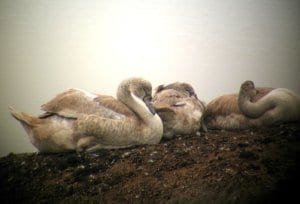
But, here is an extract from Mute Swan in PA. by Ian Gregg, PGC Wildlife Biologist:
Native to Eurasia, mute swan were first introduced in North Americas in the 1800’s. Over time feral populations became established…They can weigh up to 25 pounds…They severely disrupt food chains, with a negative effect on native wildlife…They have a very aggressive territorial behavior and have been observed…killing mallard ducklings and Canada Goose goslings…In late 2001, the Pennsylvania Game Commission worked with the Fish and Wildlife Service (FWS) on a control plan because of mute swan problems in Chesapeake Bay. One control measure was to issue federal depredation permits allowing state personnel to remove mute swans from public lands…Egg addling (treating eggs to prevent them from hatching) [firmly shaking an egg kills the embryo] can also be effective but is very labor intensive.
On March 15, 2005, the U.S. Fish and Wildlife Service issued a “Final List of Bird Species to which the Migratory Bird Treaty Act Does not Apply.” This included the Mute Swan (Cygnus olor). This was “FR Doc. 05-5127.” California amended its “California Code of Regulations, Title 14” to ban import, transport or ownership of “detrimental animals” (including Cygnus olor) because “they pose a threat to native wildlife, and agricultural interests of the state or to public health and safety.”
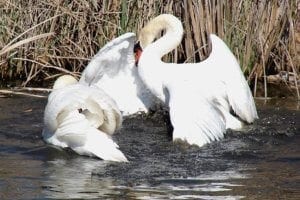
Mute Swan males fighting during nesting season.
All of this does not reduce their beauty, and they are not to blame for being planted and bred here. Leading a third-grade group on a bird walk some years ago, the children witnessed a swan killing a gosling. What does a docent say in such a situation? I leave that to you to think of an appropriate response, as this could happen again. We see fewer Mute Swan than years ago, but still they should not be extolled to the public. From experience I have found that silence is preferred rather than a lecture on the problems with Mute Swan.
Angry feral cat-lovers came out to testify before the Petaluma City Council when Gerald Moore and I recommended statutes to forbid feeding of feral cats in or about the wetlands. The recommendations passed but the group was back again after I wrote an article on the reasons for removal of American Bullfrog from the Ellis Creek ponds – to help protect the endangered Red-legged Frog. One person stated “…next it will be the swan!”. I am too old to be insulted on their website again.
In the bird survey at Shollenberger in May of 2008, 71 Mute Swan were counted. Given the impetus of the federal action, it was about this time that I approached Representative Huffman’s office to see if California would permit humane control of the swan population. They responded that there is a California statute that forbids harming any bird! Because of the likelihood of a new onslaught by the cat/bullfrog/swan people, I finally withdrew. There was also the possibility that control measures might lead to “collateral damage.”
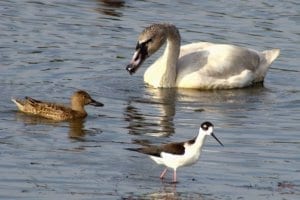
Immature Tundra Swan, Ellis Creek. Notice pinkish bill. Could they be mistaken for Mute Swan?
The migratory Tundra Swan are protected. Harming one would not please the Department of Fish and Game.
The Mute Swan population seemed to be increasing in the wetlands, and a number of docents participated in a survey of the wetlands and upper Petaluma River in August, 2012 They counted 136 swan, but 97% of those counted were in the Petaluma Holding Ponds, closed to the public absent an approved entry by Ellis Creek management! No one could reasonably deny the swan’s occupation, so (ironically) they are protected there!
I think we had three pair of swan nesting in the wetlands this year, one in the right freshwater channel at Shollenberger and several pair at Ellis Creek. This modest reproduction is acceptable, and enough to satisfy the general public without major damage to the wetlands, but will there be more swan love when the waters return to Shollenberger? I close with a photo of 60 swan during the 2012 survey in Holding Pond 5.

Count them! 60 Mute Swan.


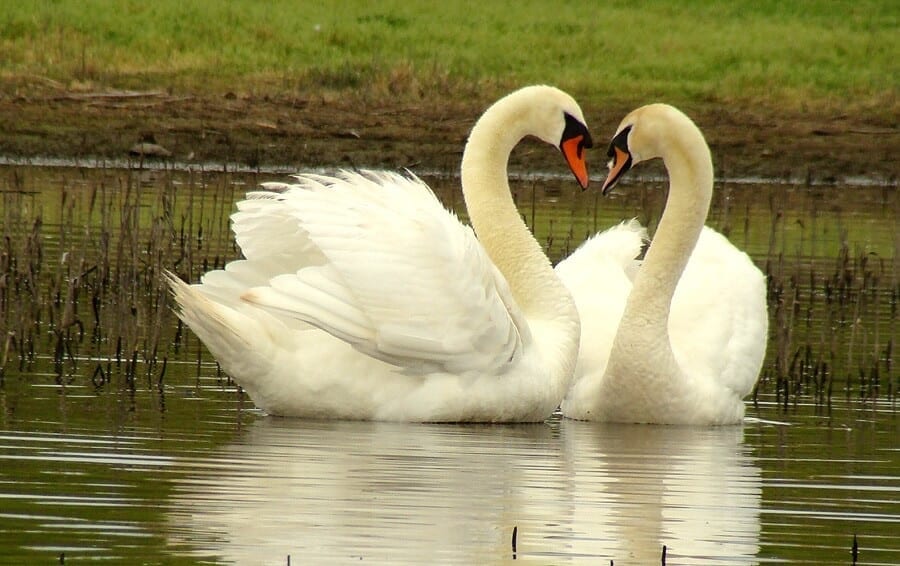
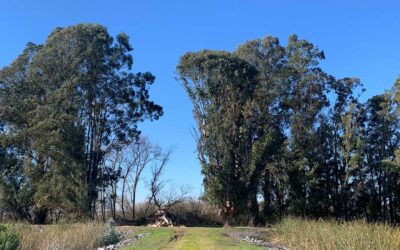
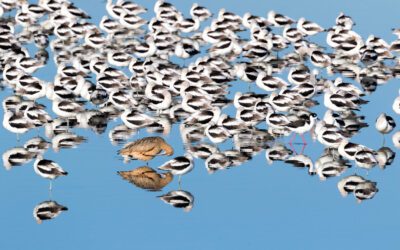
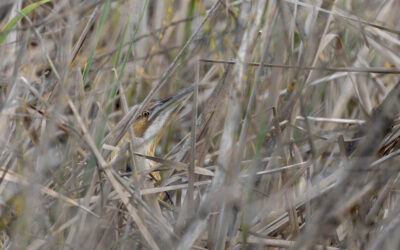
0 Comments